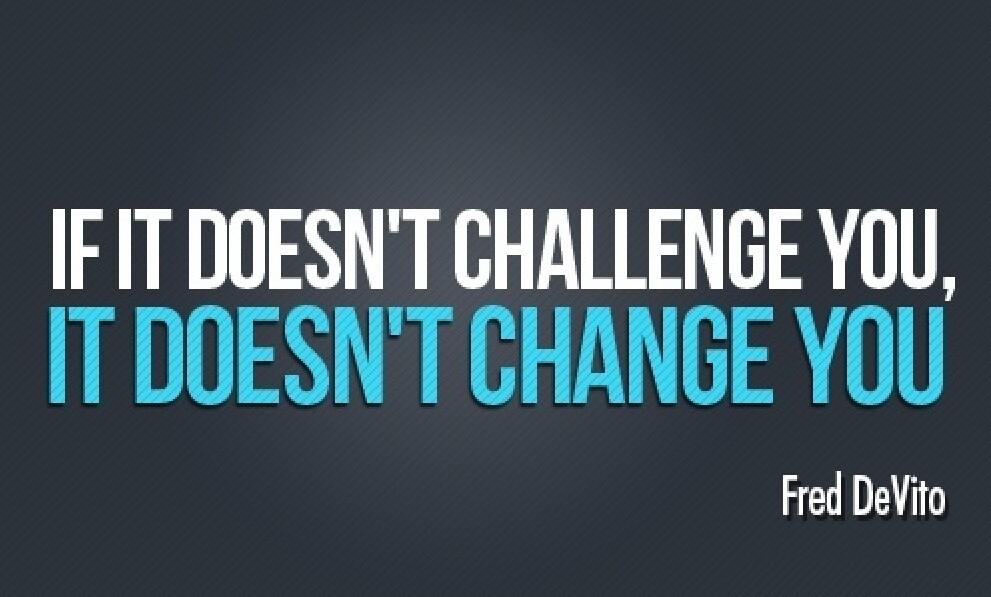“Life can only be understood backwards; but it must be lived forwards.” – Soren Kierkegaard
 The last quarter of 2014 is almost history and as we stand poised to welcome 2015 in just a matter of days, we hope for a future that is successful, rewarding and where your dreams will be realized. Having seen the start of more than a few “new business years” during my career, I’ve learned that you can do one of two things in preparation for the coming year. You can yet again try to create a brand new marketing strategy for the coming year or you can pause, look back and do some serious reflecting, resolving to change, or improve some aspect about how you will initiate your future marketing campaigns. For some people, looking back over the past year may be something better left in the rearview mirror; on the other hand, burying your head in the sand can be seen as the primary ingredient in a recipe for another disappointing year…and you know how much the CEO/President/Owner/Founder loves that kind of thinking. So before one celebrates the dawn of a new year…take time to ask yourself what are you going to do to change? What does success in 2015 look like to you and your executive management team?
The last quarter of 2014 is almost history and as we stand poised to welcome 2015 in just a matter of days, we hope for a future that is successful, rewarding and where your dreams will be realized. Having seen the start of more than a few “new business years” during my career, I’ve learned that you can do one of two things in preparation for the coming year. You can yet again try to create a brand new marketing strategy for the coming year or you can pause, look back and do some serious reflecting, resolving to change, or improve some aspect about how you will initiate your future marketing campaigns. For some people, looking back over the past year may be something better left in the rearview mirror; on the other hand, burying your head in the sand can be seen as the primary ingredient in a recipe for another disappointing year…and you know how much the CEO/President/Owner/Founder loves that kind of thinking. So before one celebrates the dawn of a new year…take time to ask yourself what are you going to do to change? What does success in 2015 look like to you and your executive management team?
Speaking for myself and our firm, the end of each year is met with a healthy dose of optimism for the coming year. We see 2015 through a lens of hopefulness, that things will continue to get better. Is that just us or will you and your organization also view the coming year with a level of anticipation that you haven’t had for a few years? Hey, it’s been tough for most everyone out there but let’s remember that at least a few organizations — perhaps some of your own competitors — have fared better than most despite these trying times. So what have they done to plot a course for a more optimistic and profitable path for success in 2015?
Depending on marketplace factors coupled with how well you were able to strategically position and market your company, the past year was either seen as a success or another year of same-old, or even a disappointment. The question that begs to be asked here is, how much of last year’s growth or lack thereof was because of something you had no control over, such as good or bad luck, and how much was because of something you specifically chose to do or not do? I’ve found through personal experience this is the time to be totally honest with yourself. As Sigmund Freud said, “Being entirely honest with oneself is a good exercise.”
Hey, I’m all for a bit of luck but you probably don’t want to continue betting future success on lucky things happening in the coming year. With this in mind, here are a few questions to ask yourself as thought starters as you begin the process of looking in the rearview mirror to last year and through your windshield to the next:
As marketers, one thing we know for sure is that change will not stop in 2015. The economy will continue to shift on us —hopefully with less drama. But by reflecting back on 2014, taking control of your marketing activities rather than being tossed around by the waves in the marketplace, along with thinking optimistically about what 2015 can hold, 2015 might actually be a year worth celebrating. It will be for us and hopefully will be for you as well.
####
Rolf Gutknecht is vice president, director of account services for LA ads. To discuss your thoughts with Rolf on this blog or any marketing matters, email via this link, or visit www.LAadsMarketing.com. You can also connect with Rolf on LinkedIn.
 Last week, just after sitting down for lunch with a new business prospect, and right after exchanging business cards, the gentleman looked at my business partner’s card and then mine, and said, “Hey, both of your titles say ’Agent of Change’…tell me more about that.” And we did. We told him about having trademarked “Agent of Change,” how every one of our employees has the same title, how it’s the essence of our business approach, and most importantly by far, how it’s our mission and mindset as marketers. For us it was easy to define what those three words meant because we live and breathe it each day. You might say it’s part of our DNA. But for many marketers, those who want to believe that they are an Agent of Change within their organization, it might not be as easily defined. In fact, if I were to ask you right now, how might you define an Agent of Change, you’d probably want a minute to think of a good definition. (At the end of this post, I’ll give you our view on how our firm defines an “Agent of Change”.)
Last week, just after sitting down for lunch with a new business prospect, and right after exchanging business cards, the gentleman looked at my business partner’s card and then mine, and said, “Hey, both of your titles say ’Agent of Change’…tell me more about that.” And we did. We told him about having trademarked “Agent of Change,” how every one of our employees has the same title, how it’s the essence of our business approach, and most importantly by far, how it’s our mission and mindset as marketers. For us it was easy to define what those three words meant because we live and breathe it each day. You might say it’s part of our DNA. But for many marketers, those who want to believe that they are an Agent of Change within their organization, it might not be as easily defined. In fact, if I were to ask you right now, how might you define an Agent of Change, you’d probably want a minute to think of a good definition. (At the end of this post, I’ll give you our view on how our firm defines an “Agent of Change”.)
If you’re looking for a dictionary definition, an Agent of Change is someone who “alters human capability or organizational systems or activities to achieve a higher degree of output or self-actualization.” Beginning with the end in mind, the goal of an Agent of Change is obviously to make changes that stick and is the foundation for future change which achieves results that weren’t previously possible. While this dictionary definition is ok, I think it misses the essence of what it means to be an Agent of Change. It has as much to do with identity and character as it is any definition.
So with that in mind, here are some ways that it feels to be an Agent of Change
Lives in the world of “tomorrow.” Regardless of what is going on today, an Agent of Change has a vision of what could or should be and uses that as the driving force to take action. To a certain extent, an Agent of Change is dissatisfied with what they see around them, in favor of a much better vision of the future. A great place to be!
Fueled by passion, and inspires the same. Change is hard work and it takes a lot of energy. Don’t underestimate this. Without passion, it’s very difficult to gather up enough energy to take on dreaded status quo that seems to otherwise carry the day. “Status quo is Latin for the mess we’re in” said former President Ronald Reagan.
Understands people. You can’t create the change that is needed if you have no real understanding of what people need or seek. It’s not about what you can do or say but rather about what the customer wants to hear. It’s also not about what you think the customer wants. Instead, you need to know what the customer wants and that sometimes requires digging deep to get to the heart of what motivates people. Knowing has saved me from my mistaken “I think” a good number of times.
Has a strong ability to motivate themselves to move forward. There are going to be lots of days where people don’t understand and can’t recognize or grasp what’s being offered up as a solution. The Agent of Change needs to find it within themselves to get up every day and come to work and risk being misunderstood and unappreciated.
However, I think the definition also needs to be based on what an Agent of Change does, in addition to the personal traits required. You see, people are willing to change when the pain of the status quo exceeds the pain of change. Or, when the future looks like it does today or worse. A successful Agent of Change recognizes the opportunity for change, identifies the best approach, and becomes the catalyst that makes the change possible, whether by design, planning, or inspiration. While they can’t do it alone, they’re the force that gets the ball rolling.
Also, an Agent of Change isn’t so much a job title or job description as it is a mentality. It’s just what they do or how they do it. Like breathing. They don’t do it only when permitted or told to do so, but rather all the time. There are very few companies that has someone with the title of Agent of Change because they don’t expect things to change much over time. If you work in an organization where committees are king, you know what I’m talking about. Sloooowww and steady is the mantra while competitors seize on all sorts of opportunities and grab market share …and new customers. The only “change” this type of company knows is the coin kind in a pocket.
OK, I told you earlier that I would share with you how we see our firm as an Agent of Change and what we told our new business prospect at lunch…so here goes:
Being an Agent of Change means upsetting the normal course of things, turning up the heat, altering the future as it now stands. It’s serving as a catalyst for growth. Being an Agent of Change is about looking beyond the immediate marketing tasks to consider the entire business environment and how an audience engages with brands in the new marketplace. From that perspective, problems and solutions start to look very different. Being an Agent of Change is about embracing the new marketplace in order to seize untapped sales/revenue-producing business opportunities, delivering real value and long-term sustainable brand credit. Whether it’s a message delivered through an email inbox or on a national TV campaign, or creating new touchpoints where customers can connect on their own terms, everything we do is designed to communicate a total value proposition and spark a noticeable Change in the relationship between the customer and your products. We do this with a shared sense of urgency in increasing sales, growing traffic count, expanding the customer base, increasing stakeholders, strengthening brand identity and enriching bottom-line revenue.
You can be that Agent of Change within your organization or find yourself an Agent of Change to help because the world is changing…with or without your permission.
####
Rolf Gutknecht is vice president, director of account services for LA ads. To discuss your thoughts with Rolf on this blog or any marketing matters, email via this link, or visit www.LAadsMarketing.com. You can also connect with Rolf on LinkedIn.

Making this kind of offer won’t necessarily produce an immediately measurable return. But its impact will ultimately return value many times over.
If you’re tracking financial return on investment (ROI) as the sole benchmark to determine if your marketing programs are working, then you need to know that there are other ways in this new world to go about doing so because otherwise you’re missing a big part of the picture.
You see, as much as we like to talk about ROI being a critical metric for marketing success, there are not many organizations that really calculate this metric — I mean really calculate it. The reason being that linking ROI to business efforts is just plain difficult, especially as a cumulative total, due to the blurring of cross-channel integration, competitive activity and economic and marketplace factors. The truth is, most CMOs have a general sense for what’s working and what’s not with respect to overall marketing spend and therefore overall ROI is calculated with experience and intuition (not on a spreadsheet).
The thing is, marketing isn’t black and white, and there are a number of marketing objectives don’t link directly to revenue / return. What if the objective is branding or awareness? You might expect an indirect impact on sales. You would also measure the success of the campaign very differently; maybe you just want to see if more people visited the website, or visited the store.
Enter Return on Objectives. Analyzing ROO means that you accept and understand that not all goals are measurable with hard data. Sometimes, marketing efforts simply help a business move in the right direction to meet its long-term objectives. For example, it could take the form of a business that develops a social media plan and creates a library of content on its website blog page, Facebook page, YouTube channel, and so on over the course of a year, all of which will undoubtedly move the company closer to its long-term brand building objectives.
There has been and always will be two schools of thought on the value of hard vs. soft metrics. Solely relying on traditional ROI isn’t enough and there will always be marketers who don’t like the fact that soft metrics play an important role in marketing today, but without considering them, a big piece of the story is missing. For example, the value of word-of-mouth marketing and an emotional connection to brands can’t necessarily be quantified. But that doesn’t make it any less important. A CEO, CMO, or CFO who ignores the less tangible importance of engagement and consumer perceptions of brands will limit the potential growth of those brands. In today’s world, that’s a big mistake. The best marketing leaders and teams can marry the two — hard and soft metrics — in order to make the best strategic decisions for the company.
Think of it like this: If short-term financial ROI is the single factor with which marketing activity is measured against, many large successful brands would never advertise. For most business types, only a smaller proportion of marketing communication generates a short-term purchase response, and this is particularly true for well-established mature brands.
Investment in marketing communication for some brands should therefore be seen for often what it really is: reinforcing/strengthening favorable brand perceptions and insuring the brand’s strength and status for the future. It isn’t always a math calculation where the dollars spent have to exceed dollars coming in. So much of building brand value is tied to emotional involvement in a brand, and that’s even harder to quantify than social media conversations and sharing. However, I don’t think anyone would argue that emotional involvement doesn’t add to equity (at least I hope they wouldn’t). Otherwise, a brand like Nike would be just another athletic shoe company. Disregarding those emotions because they can’t be precisely quantified would be a tragic mistake.
As well, what current ROI metrics don’t account for are what I’ll call “lurkers,” the people that are watching and waiting to take action. If we as marketers bail too soon based on the short-term analysis of results, then we miss the boat. How many of us have at one time or another been a “lurker?” All of us, right?
That said, without a doubt most marketers want to prove that the dollars they have invested have achieved measurable success and cost effectiveness. For me, ROO can be defined as the “Total cost of campaign divided by the number of objectives met.” To do it right, the key to measuring ROO is that specific objectives need to be created from the outset of a project along with a specific end date. In other words, the marketer must plan for measurement at the same time that the campaign is being developed.
So, instead of evaluating success based on revenues, marketers should take a look at measuring returns based on whether their objectives, from brand awareness to customer relationship-building, are met. Completion of these objectives, rather than dollars earned, will determine the success of a given campaign. As a result, ROO results will come in all shapes and sizes, but will not necessarily be defined in immediate dollars and cents…just like the offer in the photo above probably achieved for Plaza Cleaners.
My point is that ROI numbers don’t tell the entire story and relying on hard metrics alone isn’t enough. The hard and soft data is available to you for you to use it. You can bet your competitors are…or will be doing so soon.
####
Rolf Gutknecht is vice president, director of account services for LA ads. To discuss your thoughts with Rolf on this blog or any marketing matters, email via this link, or visit www.LAadsMarketing.com. You can also connect with Rolf on LinkedIn.
 A few weeks ago I wrote about the Seven Deadly Sins of Marketing and hopefully all of you sinners out there have repented. Given the response, I thought it might be good to talk about the flipside, the Seven Cardinal Virtues of Marketing. To paraphrase Abraham Lincoln, “Vices and virtues: Can’t have one without the other!” Anyway, as individuals responsible for the marketing activities of the organization, it’s worth reminding ourselves that we do have a responsibility to “behave” in a way that allows for the marketing function to perform its responsibilities in a manner that helps the company survive and thrive.
A few weeks ago I wrote about the Seven Deadly Sins of Marketing and hopefully all of you sinners out there have repented. Given the response, I thought it might be good to talk about the flipside, the Seven Cardinal Virtues of Marketing. To paraphrase Abraham Lincoln, “Vices and virtues: Can’t have one without the other!” Anyway, as individuals responsible for the marketing activities of the organization, it’s worth reminding ourselves that we do have a responsibility to “behave” in a way that allows for the marketing function to perform its responsibilities in a manner that helps the company survive and thrive.
Patience
In today’s world of “needed it yesterday,” too many marketers see patience as something that can’t be accepted by the company because it’s “just not how we roll.” Well, as a marketers we need to continue to be reminded that patience is a valuable skill and critically important to the growth of the company. For example, staying the course of what the brand’s strategy is when you know it is the right course, rather than over-reacting to others’ activities. As well, patience guides how long to stick with your marketing message. It may feel like it is old and stale to you but that’s because you’re exposed to it daily while prospects and customers aren’t nearly as familiar with it. That doesn’t mean you should keep repeating the same thing over and over again, especially if a better approach is required. Be patient with yourself and resist the temptation to compare your progress to that of others. Hey, it takes some time to set up a lead generation and follow-up machine that will crank out good results month-after-month, right?
Diligence
Sometimes the best course is to apply a little dose of patience and sometimes one needs to persist and push through the challenge at hand. Be diligent in doing something every day to move your marketing and sales programs forward. You can always do a bit more to optimize the website, create more content, tighten your message or figure out how to better add value to the selling process. Keep learning the new skills necessary to succeed in a changing marketing world. Since the web is such a powerful awareness and lead generation tool, anything you can learn about how it works is helpful. With social media becoming an increasingly more visible component in your marketing efforts, be determined to write that blog post, send some tweets, utilize LinkedIn, etc., even when you don’t feel like it. You never know when your efforts will pay off. In short, it’s keeping the brand’s finger on the pulse of the market, and working to respond properly to it.
Fortitude
News Flash! The marketplace is as fluid as water so the watchwords for the day are “Stay Alert and Stay Brave.” “The Fast and the Furious” isn’t just a name of a movie series, it’s also how the Net moves. It can also describe competitive activities and certainly how your customers think and take action. Keep in close touch with those factors that will either lead you to success or be the things that will keep you up at night. Do your best to stay up to date by doing the necessary customer and competitive research by seeing what is being written and said about you online from Epinions to Yelp and many more review sites. Remember, “not knowing” is just that and more than one company has been blindsided by bad sales results because they imagined they knew what was going on in the marketplace and what customers and prospects thought of them. Sure they did.
Honesty/Justice
Customers know when companies are not being upfront or honest with them by what they see, read or hear in the marketing or advertising. They know when you’re trying to hide behind the small legal type or legal mumbo-jumbo. And guess what? As people who really dislike honesty, they bail…and they let others know about it as well. Conversely, think like your customers: If you had a problem with an order and wanted it resolved, you’d want to be treated fairly—and so would they. Make sure that your marketing material and activities reflect a company who respects and values their customers…because we know that they’re not easy to come by.
Faith/Courage
Believe in yourself and what your company is marketing. Know that marketing does work, regardless of the naysayers throughout the organization from C-Suite to the folks in finance and sales. My business partner is quick to point out that marketing is a self- fulfilling prophecy: If you believe in it, you’ll commit to it, invest in it and give it time to work… and it will. Or, if you don’t really believe in it, you’ll hold back, and guess what? It won’t work, and you’ll be right as well. If we’re honest with ourselves, there are times when we’ve wondered if what we’re doing is really achieving the goals we’ve set forth. Realize that success usually comes only after setbacks. View failure as an unavoidable component of success.
Prudence
Planning and acting can be difficult for a lot of marketers who often fear looking indecisive or making a mistake when the firm’s future—or their job—is at stake. Making decisions that are politically expedient, that travel the path of least resistance or avoid confrontation are dangerous and often unproductive without thinking through the ramifications of the decision. And when that happen, like clockwork, a marketing problem raises its ugly head. To help with that, first listen to what others have to say because the right answer might possibly come from them….really. Second, judge with the information in hand. And then, once you judge the right thing to do, the next thing to do is act. Otherwise, what’s the point?
Chastity/Charity
It’s a virtue combination that in our everyday life we think is important….but is rarely acted upon in business. Yes, as marketers we’re responsible for communicating a meaningful and unique value proposition that the brand alone can own and then making sure that the audience embraces it both emotionally as well as rationally. But shouldn’t we also make sure that the brand contributes something meaningful to the market – or even better, the society? A brand should stand for something more than just the product or service that comes from a company. A reputation for being a good corporate citizen only comes through actions that don’t have an obvious ROI attached to it, such as sponsorship or participation in causes or activities that benefit the community because it’s a right thing to do. Think about how as a marketer this chastity/charity mindset could feed the soul of the organization.
As marketers, we realize that the marketplace brings with it many trappings and temptations that could lead us astray from doing the job that both we and the company expect. Recalibrating our thinking and actions to embrace the virtuous side of ourselves in a way that also benefits the organization will lead us to a better place. Let’s go and do good. Your company and customers deserve it.
####
Rolf Gutknecht is vice president, director of account services for LA ads. To discuss your thoughts with Rolf on this blog or any marketing matters, email via this link, or visit www.LAadsMarketing.com. You can also connect with Rolf on LinkedIn.
Not too long ago, I  watching a series on PBS about the Seven Deadly Sins (Wrath, Pride, Envy, Greed, Sloth, Lust and Gluttony) and things started churning in my mind. So I decided to list my “Seven Deadly Sins of Marketing,” given what I continue to see taking place within marketing and marketing departments across all different industries.
watching a series on PBS about the Seven Deadly Sins (Wrath, Pride, Envy, Greed, Sloth, Lust and Gluttony) and things started churning in my mind. So I decided to list my “Seven Deadly Sins of Marketing,” given what I continue to see taking place within marketing and marketing departments across all different industries.
Guessing
In the Dilbert cartoon series, Dilbert says that “marketing is just liquor and guessing.” Funny…but as we know, a bit simplistic. Yet, too many companies assume that there is absolutely no need to substantiate their beliefs about the marketplace, about what their prospects want, about why their customers are buying, about what people think of their brand, about most anything having to do with those whom they want to purchase their products or services. Generally the thinking is that no one can know the marketplace as well as the company and the market will accept whatever you offer. Guess (pun intended) how that turned out for Kodak, Borders Books, TWA, and certainly some companies in your own industry! Ask yourself, when was the last time that your company committed the time and resources to do some marketing research…qualitative, quantitative, ethnographic, etc. And do it right.
Marketing by Committee (Indecisiveness)
I’m not sure why, but when it comes to marketing, everyone seems to have a say. Partners, staff, associates, spouses, and the janitor all want to give their two-cents. How about an accounting committee to help figure out where the credits and debits are posted? Or an office supply committee to pick out the colors of pens you order? Many executives forget that great marketing is not about what they like. Great marketing is about what works.
Committees, by nature, are full of compromises so solutions are usually watered down versions that will wind up doing little or nothing to accomplish your growth goals. Marketing by committee leads to lots of bad ideas and poorly thought out plans. Instead of bold strokes from the marketing brush, you get a sea of beige. And then it doesn’t work. Who would have thunk it! The solution is to decide on objectives and budget, and then write a marketing plan. Once the plan is approved, ONE person gets appointed within the organization to take on the role as “the decider.” Empower him or her to make all the courageous decisions required to position your company to dominate your category.
Inconsistency
When different aspects of your marketing messages don’t reinforce each other, the inconsistencies alienate prospects and current customers. Inconsistent marketing distorts clear expectations, makes potential customers unsure of the characteristics of your products and creates unhappy customers who don’t get what they expect. These inconsistencies affect businesses by reducing both initial sales to consumers as well as repeat sales from dissatisfied customers. Also, be consistent with your marketing plan. Don’t stop running an ad, for instance, just because the first insertion didn’t ring your phone off the hook. Give your campaign time to work, but you also need to know when a change in direction is a good idea. Remember, people are not paying that much attention to you, but when they do, it helps if the message you’re saying now is similar to the message that they heard the last time.
Complacency
It’s out there right now. Lurking in the shadows of your success. It is the silent business killer that strikes without warning and can bring even the biggest and the brightest companies to their knees. What is this hidden terror? Complacency. We all know it better as the dreaded “status-quo.” It generally takes the form of “whatever we did last year.” Except, things change. Your competitors are changing things up. Your customer’s needs are changing. The marketplace is changing. A few things to avoid complacency: Keep looking in your rearview mirror to see what your competitors are doing. Listen to new ideas as the next big idea may not come out of your own mouth. And, strive to always do better even before you are forced to react to a competitor’s challenge.
Lack of Focus
Okay, so after reading articles by “experts” about how you should have a customer engagement program in place (so you can be more “customer-centric”), you’ve put your company on LinkedIn, YouTube, Facebook, Twitter, Google+, and Pinterest. Heck, you’re even ready to go when the next big social media platform launches. You’ve got your product literature online, and your Web site has a blog and videos. Not to mention all the offline activities ranging from tradeshow activities to advertising to PR, etc. But why did you believe you needed to be in ALL of these social media locations in the first place, and, just as importantly, who is making sure that all of these activities work together?
Narcissism
It’s ridiculous that I have to say this but the memo has not reached the desk of many marketers, so here goes: “It’s not about what your company wants to say but rather about what the customer wants to hear.” (I feel better having said it.) Look, if you want to market based on your personal preferences without regard for what works best with your prospects, that’s your prerogative. But I’d suggest that your company’s marketing not be so self-absorbed. Remember, you don’t buy from you, others buy from you and they don’t care about your business and your troubles nearly as much as you do. Most people are tuned into Radio Station W.I.I.F.M. —“What’s In It For Me!” If your marketing message is all about you, then your customers won’t notice what you’re saying. Please begin to “tune” into your customers, find out what they really want and focus your message on them.
Confusion
Maybe, just maybe, the deadliest marketing sin of all is not having one over-arching marketing strategy – and insuring its implementation through all your tactics. Executing marketing tactics without having a well-developed integrated strategy is like leaving your roadmap tools at home and taking off on the drive without considering if you’ve chosen the right road. You wouldn’t haphazardly set off on an important trip in your car so why let it happen with regard to your company’s marketing activities. It’s easy to start with the “how” but if you haven’t identified the “what,” you may find yourself spending a lot of time executing tactics that don’t take you where you want to go and in so doing, you’ll be wasting time, resources and losing out on sales-producing opportunities. What is needed is one single integrated strategy that looks across all delivery platforms whether online or offline, print, broadcast, or mobile. Your customers don’t have an online self and offline self and neither should you. Think holistically about all your marketing initiatives.
Yes, there are more Deadly Sins that I could have talked about, like trying to be a “do-it-yourselfer,” or not measuring your activities, or saving yourself into bankruptcy, but the above are the Seven Marketing Sins I rank topmost. Now, let us all go out and to the best of our ability, sin no more.
####
Rolf Gutknecht is vice president, director of account services for LA ads. To discuss your thoughts with Rolf on this blog or any marketing matters, email via this link, or visit www.LAadsMarketing.com. You can also connect with Rolf on LinkedIn.
 Over the past year, I’ve been having a conversation with clients, co-workers, friends and family about “the state of marketing” and the results are in. Marketing (and its various forms) seems to be dumbing down more and more. And since I’m not wired to accept mediocrity or any real form of laziness, allow me just this one time to channel my best Peter Finch (in the movie Network) and say “I’m as mad as hell and won’t take it anymore!”
Over the past year, I’ve been having a conversation with clients, co-workers, friends and family about “the state of marketing” and the results are in. Marketing (and its various forms) seems to be dumbing down more and more. And since I’m not wired to accept mediocrity or any real form of laziness, allow me just this one time to channel my best Peter Finch (in the movie Network) and say “I’m as mad as hell and won’t take it anymore!”
Can someone please tell me why this is going on? In what forms does this dumbing down of marketing play itself out? Well, for starters, open up any newspaper, magazine or trade pub. Turn on any TV or radio station. Drive down the street and look at the billboards or bus panels. And even online. It’s all around us… at home, at work… even on vacation. There’s isn’t a day that goes by where I don’t see some sort of advertising or marketing effort and say “what in the world are they trying to say?” This coming from a guy who, as humbly as I can say this, can put 2 and 2 together pretty darn quick. But the mental gymnastics that I have to do to try and get the point, if I can get there at all, is becoming more and more prevalent. In most cases, the message is convoluted. Other times, the message is beyond generic so much so that any company in that industry (and in many cases, in another industry) could say the same thing. Oh and then let’s not forget about puns or borrowing from successful campaigns (“Got Dog Food?” “Got Rice?”) Many times the channel isn’t right for the message and the message is obviously shoe-horned into the event or activity. Whether B2B or B2C environments, it goes on. Please tell me that you’re seeing the same thing. You are, right?
Additionally, I’m gobsmacked (haven’t used that word in a while) at the type of “discussions” on issues that are being pondered within some of the LinkedIn groups of which I’m a member. From the “Is it important that Sales and Marketing be on the same page?” to discussions that people dare not ask of their coworker “How do I go about finding a direct mail printer?” Not to mention the blogs that deal with the details of details. On top of that, there also seems to be this craze for incorporating each new marketing tool, channel or approach (“the next big thing”) as though it will be the silver bullet to all the company’s marketing problems. And, to make matters worse, there’s a sprint to implement each new specialty, and in doing so, marketing starts heading down the slippery slope of actually getting further away from understanding the real world in which prospects and customers make purchasing choices. I think we can agree that this is neither good for the organization or for business as a whole. Not good at all.
OK, at what point in time was it decided that DIY is as good as what a successful outside marketing firm could provide? My business partner coined a phrase that I really like: “DIY is pervasive but hardly persuasive.” Yet it seems to be what we’re seeing in the world today. The seemingly fun and economical do-it-yourself route usually leads to less than optimal results. Just because one understands how to use some design software doesn’t mean the outcome will help in achieving the goals set for that individual piece of marketing material. I think that we might all agree that what separates the best work from the rest of the herd is what one does with the tools and not the tools themselves.
Another way that I see dumbing down happening is but the shear amount of specialization that goes on. This is not to say that being a specialist is a bad thing…it’s not… but as the marketplace continues to evolve and in so doing become more complicated, there are lots of marketers who know more about less and less due to being so specialized. What I mean is that these “specialists” are so focused on what they’re good at, they forget that you can’t solve an equation by concentrating only on parts of it. They can’t see the forest for the trees!
So how did this all come about? Well, as CEOs and CMOs whacked away at their marketing budgets over the last decade, they stopped hiring the most experienced and talented marketing professionals, the guys and gals with real degrees in marketing and gray hair earned on the battlefields of brand-building. Instead, they hired people with “3-5 years experience” or moved over someone from human resources or finance or even the clerical pool to fulfill the marketing. Or they brought in specialists with social media or website experience and made them responsible for the whole marketing affair. Is it any wonder, then, that we’re seeing the kind of marketing on exhibit every day?
With the marketplace getting more complex and customers becoming more sophisticated than ever, now’s not the time to dumb things down but to think and behave like smart marketers once again.
####
Rolf Gutknecht is vice president, director of account services for LA ads. To discuss your thoughts with Rolf on this blog or any marketing matters, email via this link, or visit www.LAadsMarketing.com. You can also connect with Rolf on LinkedIn.
 Fulfillment isn’t always what it’s cracked up to be, especially in business. Consider a conversation I had today with one of our media reps that revealed why so many B2B ads aren’t just bland but simply bad. This was in response to why an ad appeared in their publication quite differently from what the advertiser expected. (We didn’t do this ad, so we’re off the hook!) When we asked the rep why the ad didn’t fit the space properly, and why the publication didn’t contact the advertiser to discuss the problem, the answer was they’re so used to getting poorly-designed ads, they’ve just come to accept what they’re sent without question.
Fulfillment isn’t always what it’s cracked up to be, especially in business. Consider a conversation I had today with one of our media reps that revealed why so many B2B ads aren’t just bland but simply bad. This was in response to why an ad appeared in their publication quite differently from what the advertiser expected. (We didn’t do this ad, so we’re off the hook!) When we asked the rep why the ad didn’t fit the space properly, and why the publication didn’t contact the advertiser to discuss the problem, the answer was they’re so used to getting poorly-designed ads, they’ve just come to accept what they’re sent without question.
How shocking this answer was to us! And yet, it so perfectly identifies the state of things, not just within one specific industry but across many of the industries in which we work.
The real problem is that in the last several decades, the role of marketing has been relegated to fulfilling. In other words, it seems the task these days is to “get the ad into the pub,” and not worry about whether the ad is great and shifts the attention of the audience. Advertisements, websites, collateral and all other marketing communications are less effective today it seems because they’re just space-fillers. The media plan says they have to be there. So the result is lots of media space or air time taken up with ad messages that aren’t merely forgettable but are also not produced or placed that well.
So it’s time for anyone who is responsible for advertising and marketing to look in the mirror and ask, “Am I a fulfiller or a marketer? Is marketing a task to be checked off on my list of the day’s activities or do I delight in the prospect of arriving at a plan so smart and unexpected, it makes me giggle?” Fulfillment is great in the abstract, but a killer in business.
I’ve often said that marketing is a self-fulfilling prophesy: if you believe it works, you’ll invest yourself and your resources into it fully and – Voilà!- it works; or if you doubt its effectiveness, you’ll put in the minimal efforts (in other words, simply fulfill the order) without great enthusiasm and you’ll also be proven right.
Every piece of communication from your desktop is an opportunity to invigorate sales and renew a conversation with your customer…if you believe it will.
It means, in some cases, looking at the internal team who are engaged in your marketing. Are they people who majored in advertising and marketing in school, and are they still “students” of it today? Or did they move across from the HR or accounting department because nobody else wanted the job? Are they fully invested employing great marketing to grow your operation, or are they also juggling bookkeeping, sales, IT and family services all at the same time? Are you taking full advantage of outside resources who aren’t just design shops and web programmers but genuine marketing specialists, who will challenge and surprise you and are willing to own up to the results?
In other words, at the bottom line, is marketing a joy…or is it a job?
Think carefully about how you answer this. Because your company’s success hangs in the balance.
####
Rolf Gutknecht is vice president, director of account services for LA ads. To discuss your thoughts with Rolf on this blog or any marketing matters, email via this link, or visit www.LAadsMarketing.com. You can also connect with Rolf on LinkedIn.
 Retail pioneer John Wanamaker was famously quoted “Half the money I spend on advertising is wasted; the trouble is I don’t know which half.” It’s the dilemma of marketers whether they’re in retail or manufacturing, whether they’re spending tens of million dollars a year on marketing or just ten thousand.
Retail pioneer John Wanamaker was famously quoted “Half the money I spend on advertising is wasted; the trouble is I don’t know which half.” It’s the dilemma of marketers whether they’re in retail or manufacturing, whether they’re spending tens of million dollars a year on marketing or just ten thousand.
As catchy as the quote may be, it’s not really that difficult to parse the answer. After all, there are only two fundamental components to advertising: what you have to say and where (or to whom) you say it. The half most advertisers spend the bulk of their money on is the “where,” which really means the media. So when the advertising results in a resounding thud, all that expensive media gets the blame. I can’t tell you how many times I hear a new client tell us “I’ve run in radio and it doesn’t work” or “We don’t use billboards, that’s a waste of money.”
Gentle readers, here’s the simple truth: if the message is not compelling, you can quadruple your advertising spend and still get dismal results.
Let’s put it in human terms. The guy who’s popular at a big party will be popular at a small party. The guy who’s a bore at black tie gala will put people to sleep standing at a car wash. So, in short, it’s primarily all in the messaging. What you choose to do at this juncture is what will affect everything that follows. So here are some ways to think about making both halves of your advertising dollars work for you:
So, in essence, getting your money’s worth starts at the very beginning, not at the end. Putting the bulk of your focus on messaging, rather than media, will be much more rewarding. Oh, and while we’re at it, D-I-Y is pervasive – but hardly ever persuasive! Try this on for size: open up 5 trade or consumer magazines and tag or cutout 10 ads that stop you in your tracks… ones that convey a strong value proposition, ones that you wish your firm had done! My completely biased but nevertheless absolutely accurate guess is that all 90% of those ads you clipped out were created by a marketing or advertising agency.
Also, don’t substitute hard-core strategic homework for a clever headline. And don’t think that the media selection is wrong when the creative you’re placing in it is what’s sending your audience running in the wrong direction. (I’ve seen humble bus benches create insanely great response when used creatively.)
There. Now you know which half of your advertising needs more of your love.
####
Rolf Gutknecht is vice president, director of account services for LA ads. To discuss your thoughts with Rolf on this blog or any marketing matters, email via this link, or visit www.LAadsMarketing.com. You can also connect with Rolf on LinkedIn.
 So you have a horde of demographic data, but do you really understand: Who is your customer? This question is not as easily answered as you think.
So you have a horde of demographic data, but do you really understand: Who is your customer? This question is not as easily answered as you think.
If you’ve written a marketing plan in the past 10 years or so, you’ve probably described your company’s target audience like lots of other marketing people do. And by that I mean things like “adults 55-65 who enjoy eclectic rock music and listen to Pandora” or “men 25-40 who like to run or bicycle 2x per week” or “CFO’s of businesses with annual sales between $15-$25 million.”
While these descriptions all follow the format taught in Marketing 101 to MBA classes in universities around the country, they’re unfortunately all nearly worthless because they provide almost no relevant information for making strategic decisions. Yes, it’s important to have this kind of information be part of the target audience description, but every year, innumerable marketing directors automatically write up plans with these kinds of empty descriptions of their target audiences. And every year, these same companies run around trying to figure out why they’re not really connecting with their customers.
Why demographics aren’t enough
First of all, your customers aren’t demographics. They’re not age ranges…or job titles…or geographical regions…or salary brackets. They’re human beings. It’s almost ridiculous to have to say that, but companies are constantly unable to remember this basic fact. Consequently, these so-call customer-centric organizations continue to roll out downright uninspiring messages to their audiences. “Got (fill-in the blank)?” Or “Do you like to garden? Then you’ll love GroundHog Tiller”? Or, “Kangaroo Jumpers are designed for the active adult outdoor workout enthusiast.” Or, “Springboard provides IT professionals and developers with the platform and tools needed for server administration, application extensibility, and interoperability.” While good money is spent in creating online sites, digital advertising, offline marketing materials and media placements, customers roll their eyes and shake their heads in disbelief (or worse, simply ignore the messages) because they know marketing drivel when they see it–just like you do–and they quickly move on to something more fascinating and relevant.
To sum it up, demographic information is good to have because it’s helpful to know something about the people you’re targeting and it gives you a good foundation to build our buyer personas on. But in today’s world, mere demographics 1) don’t tell you what these people’s pain points are, 2) they don’t tell you about their personal goals, and 3) they don’t tell you about interests and style. That’s why demographics just aren’t enough. Real-life people (i.e. your wife/husband, your mother/father, heck, even you) don’t view themselves as demographics. So as marketers, we shouldn’t view them that way, either.
Getting to know your customer
If it’s important to connect with your customers so that they take the time to listen to what you have to say, you have to stop pushing uninspired marketing clichés on them and instead focus on understanding who they really are, how they really think, and what’s really important to them. That soccer mom driving the crossover SUV with 2.5 kids? Well, her name is Lori. Yes, she goes to early morning workout classes at her fitness club, but do you know why she goes? She’s also on Facebook at least twice per day, but do you know why? Stop making assumptions (because you’ll probably be way off) and start asking questions. Then, when you start to understand, you can get real in the way you talk to Lori. (FYI, Lori goes to early morning workout classes because…she worries about heart disease as she ages since her aunt died of a heart attack at 51, and she’s on Facebook twice per day because…she’s responsible for the social media activities for her company. Probably not what you thought, right?)
Everyone sees the same person
So once you better understand what’s going on in the minds of your audience, you can do a few things to ensure that this information doesn’t just sit in a binder on shelf, but rather that it becomes an everyday part of how your marketing activities are created and put to work.
One example, and a personal favorite of mine, is to create a “customer persona” – an example of the person that would interact with your product or service – with a name, face, and look to help your team connect with your target audience in a more direct and insightful way. In order to achieve this, you need to recognize (or at least imagine) that prospect’s personal and professional interests, priorities, aspirations, fears, motivations, goals, pain points, etc. These factors will have a major influence over what catches their attention when it comes to solving a business issue. Personas concentrate on what a user does, what frustrates the user, and what gives the user satisfaction. A good persona is a narrative that describes a person’s typical day and experiences. In short, bringing the “user” to life helps you better understand what drives your user so you can build around that. (Note: There are numerous customer persona examples that you can source online to show you how it’s done.)
As a result of creating a customer persona, your team no longer has to try and hold an abstract or numeric customer profile in their heads. Nope. All they have to do is ask, “What would Lori think about this?” This simple but important change can bring about significant differences in the way a company considers its customers during decision-making processes.
So, let’s try this again: who is your customer?
####
Rolf Gutknecht is vice president, director of account services for LA ads. To discuss your thoughts with Rolf on this blog or any marketing matters, email via this link, or visit www.LAadsMarketing.com. You can also connect with Rolf on LinkedIn.

We’ve all had an experience with those finance/accounting types who drive us crazy, requiring that any and all marketing initiatives be measured and that we justify our expenses. More times than not, we spend lots of time trying to come up with metrics that will satisfy them. But in doing so, as marketers we sometimes come up short in the mind of the finance guys and then you hear things like: “Marketing just doesn’t understand numbers,” or “when campaign results don’t stack up, admit it and then figure out how to move forward.” Alternatively, Marketing Directors, say things like: “Finance doesn’t know what good marketing can do for our brand,” “Marketing is not just about spreadsheets,” or “When was the last time they went out on a sales call?” Yup, we’ve heard these and other responses on more than one occasion.
With all due respect, I’d like to put it out there that maybe a majority of the problem doesn’t always start and end with the financial folks. How’s that? Well, sometimes, it seems as if the marketing people and the finance people are just talking two different languages. Certainly, each has a different “world view” of business. For example…
We talk a lot about strategy and forget about tactics.
Because of the sexiness associated with Strategy, we marketers like to call almost everything we do “strategic.” In fact, almost every component of marketing now seems to have its own strategy: Online strategy. Social media strategy. PR strategy. CRM strategy. And it just keeps on going. Well, for the folks in finance & accounting, there’s a critical difference between a strategy and a tactic! The word “tactics” in their minds is immediate, all about bringing in income sooner rather than later. “Strategy” to them is more about a longer-term income stream that won’t likely show up on next quarter’s P&L statement. So, if tactics and strategy play different roles in ROI, and all we do is stuff that’s “strategic,” maybe the CFO is right to wonder if what we do will ever positively affect the bottom line? And when?
More times than we should, we talk high expectations. And then deliver less than startling results.
Too often, marketers jump on the latest fad and technological ‘’silver bullet’ and declare that this is the answer we’ve all been waiting for. Some people in marketing are too quick to buy into what others are doing, even if it doesn’t actually makes sense for your industry or company. And there are some chasing the rainbow looking for the pot of gold. For example, five years ago, there were people writing books, blogs and commentaries telling everyone who would listen that because of the internet, brick and mortar businesses would decline and that we’d all be working virtually by now. How has that turned out?! Hmmm. I’m glad I don’t have to eat those words. I’m not suggesting that as marketers we sandbag the anticipated results for any marketing effort or campaign we’re launching, but we do need to watch just how rosy a picture gets painted, because the numbers people will hold us accountable.
We spend almost no time developing relationships with “those people in Finance”.
When I started in the Marketing Department of a large Fortune 100 organization, the first piece of advice I received from my boss (who had my job before being promoted) was “go and make friends with the people in Finance.” “Making friends” were the key words because that’s when things start to happen. It’s amazing when marketing and finance people begin having lunch together and start to understand how each department sees the world. When was the last time you saw marketing people explain the rationale behind their plans, develop some semblance of what the company can expect in the ways of meaningful metrics, give details and defend the realities behind the timelines, or justify the amount of work it takes to make a concept real and attractive in the marketplace? In short, by figuring how to work with one another, communicate with one another, and then look for ways to help one another, everyone can feel better with what the Marketing Department is doing.
So, do marketers need to talk the language of finance? Or do finance people need to become more fluent in marketing? Or is it somewhere in between? And how do we get there? Well, how does this sound as a starting point. When we marketers talk to our customers and prospects, we’re supposed to speak to them in a language that they understand – one that’s meaningful and beneficial to them. Maybe we should try talking to those Finance People the same way.
####
Rolf Gutknecht is vice president, director of account services for LA ads. To discuss your thoughts with Rolf on this blog or any marketing matters, email via this link, or visit www.LAadsMarketing.com. You can also connect with Rolf on LinkedIn.